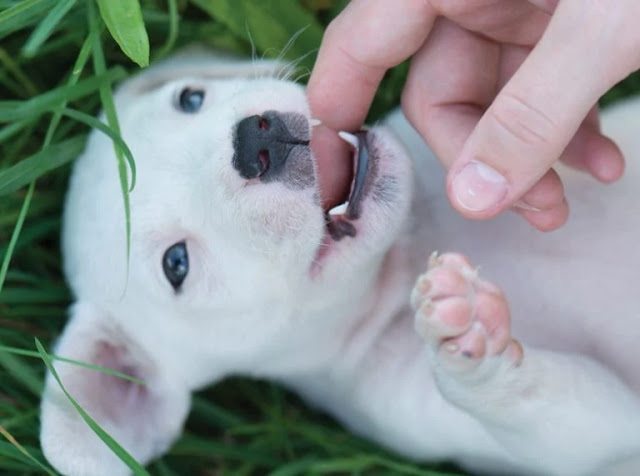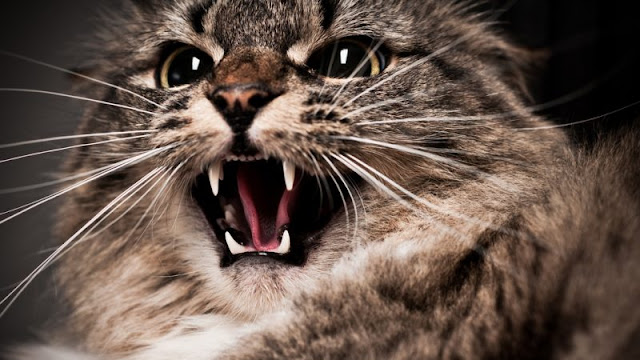why is my cat biting me? Explain in detail
Cat Aggression Towards Humans
Cats are generally known for their independent and aloof nature, but sometimes they can exhibit aggressive behavior towards humans. This aggression can manifest in various ways, including biting. If you’ve ever found yourself asking, “Why is my cat biting me?” you’re not alone. In this article, we will explore the reasons behind cat biting behavior and provide some insights on how to address and prevent it.
Cat Biting Behavior
Before delving into the reasons for cat biting, it’s important to understand the different types of biting behavior exhibited by cats. Biting can range from playful nips to more aggressive bites that can cause injury. Cats may use biting as a form of communication, self-defense, or even play. It’s essential to observe their body language and context to determine the motivation behind their biting behavior.
Reasons for Cat Biting
There can be several reasons why your cat may be biting you.
Let’s explore some of the common causes:
1. Fear or Anxiety
Cats may resort to biting when they feel threatened or scared. This could be due to unfamiliar environments, loud noises, or interactions with unfamiliar people or animals. It’s important to create a safe and secure environment for your cat to alleviate any anxiety or fear-related aggression.
2. Pain or Illness
If your cat suddenly starts biting when they were previously calm and friendly, it could be an indication of an underlying health issue or pain. Cats often resort to defensive behavior when they are experiencing discomfort. It’s crucial to consult a veterinarian to rule out any potential health problems.
3. Overstimulation
Some cats have a lower threshold for physical touch and may become overstimulated during petting or play sessions. When they reach their threshold, they may respond with biting as a way to communicate their need for personal space. Learning to read your cat’s body language and recognizing when they’ve had enough can prevent biting incidents.
4. Redirected Aggression
Cats are territorial animals, and when they observe a potential threat outside the window or a visible target that they cannot access, they may redirect their aggression towards the nearest person or animal. This is a defensive mechanism and should be addressed by redirecting their attention or blocking their view of the triggering stimulus.
5. Lack of Socialization
Cats that have not been properly socialized during their early stages of development may exhibit fear-based aggression towards humans. It’s important to expose kittens to various stimuli, people, and experiences to ensure they grow up to be well-adjusted and friendly adults.
Cat Biting and Body Language
Cats communicate through their body language, and understanding their signals can give you valuable insights into their emotions and intentions.
Here are some common body language cues that may precede biting:
1. Flattened Ears
When a cat’s ears are flattened against their head, it usually signifies fear or agitation. If you notice this body language, it’s best to give your cat some space and avoid any sudden movements that may escalate their anxiety.
2. Dilated Pupils
Cats have a natural ability to dilate their pupils to let in more light, which can be an indicator of heightened excitement, fear, or aggression. If your cat’s pupils are dilated and they appear agitated, it’s advisable to approach with caution and avoid any sudden movements.
3. Tense Body Posture
A cat’s body posture can reveal a lot about their emotional state. If a cat’s body appears tense, with raised fur or an arched back, it may be a sign of aggression or a defensive stance. It’s important to back off and allow the cat to calm down in such situations.
4. Tail Flicking or Lashing
When a cat’s tail is flicking rapidly or lashing from side to side, it often indicates agitation or annoyance. This can be a warning sign that the cat is becoming increasingly agitated and may resort to biting if the situation continues to escalate.
Cat Biting and Territoriality
Cats are territorial animals by nature, and territorial aggression can be a common cause of biting.
Here are some aspects related to territorial behavior that may shed light on why your cat is biting you:
1. Protecting Their Territory
Your cat might perceive you as an intruder in their territory, especially if they are highly territorial. They may bite to establish boundaries and defend their space. Creating a sense of ownership, providing adequate scratching posts, and giving them their own space can help alleviate territorial aggression.
2. Introducing New Pets or Family Members
When introducing a new pet or family member to your cat’s territory, they may exhibit protective behavior and resort to biting. It’s crucial to introduce new additions gradually and create positive associations to reduce the likelihood of aggression.
3. Outdoor Encounters
If your cat goes outdoors, they may encounter other cats, animals, or even humans. These encounters can sometimes trigger territorial instincts, leading to aggressive behavior and biting when they return home. Close supervision and limiting outdoor access can help reduce such incidents.
Cat Biting and Dominance Behavior
Some cats may bite out of perceived dominance or a desire to establish their authority.
Understanding dominance behavior can help address and prevent biting incidents:
1. Establishing Hierarchy
Cats are hierarchical creatures, and some may resort to biting to establish their position in a multi-cat household or even with humans. It’s important to provide each cat with their resources and ensure they feel secure and respected to prevent dominance-related aggression.
2. Lack of Training or Boundaries
If a cat has not been trained or provided with clear boundaries, they may resort to biting as a way to assert control or get what they want. Consistent training, positive reinforcement, and setting appropriate limits can help prevent dominant behaviors and biting incidents.
Ways to Prevent Cat Biting
Preventing cat biting requires a comprehensive approach that addresses the underlying causes and promotes positive behavior.
Here are some strategies to help you prevent cat biting:
1. Socialize Your Cat
Early socialization plays a vital role in preventing fear-based aggression. Introduce your kitten to various people, experiences, and stimuli to ensure they grow up to be well-adjusted and friendly cats.
2. Provide Mental and Physical Stimulation
Mental and physical stimulation is essential for a cat’s overall well-being. Enrich their environment with interactive toys, scratching posts, and playtime to keep them engaged and prevent boredom-related aggression.
3. Avoid Overstimulation
Learn to recognize your cat’s body language and avoid overstimulating them during petting or play sessions. Stop when they’ve had enough and give them space, ensuring you respect their boundaries and comfort levels.
4. Consult a Veterinarian
If you notice a sudden change in your cat’s behavior, especially if it is accompanied by other signs of illness or discomfort, consult a veterinarian. They can rule out any potential health issues that may be contributing to the biting behavior.
5. Positive Reinforcement Training
Training your cat using positive reinforcement techniques can help redirect their behavior and reinforce good habits. Reward desired behaviors with treats or praise and discourage biting by redirecting their attention to appropriate toys or scratching posts.
Cat Biting and Play Aggression
Play aggression is a common cause of biting in cats, especially among kittens and young cats.
Here are some tips for addressing play aggression:
1. Use Interactive Toys
Channel your cat’s predatory instincts into interactive play sessions using toys such as feather wands or laser pointers. This will redirect their aggressive behavior towards appropriate targets while keeping them mentally and physically stimulated.
2. Provide Playmates
If your cat is exhibiting play aggression, providing them with a suitable playmate can help redirect their energy. Another friendly cat or a well-matched dog companion can engage in rough play, relieving the need to use biting as an outlet.
3. Encourage Gentle Play
Teach your cat to engage in gentler play by rewarding calm and controlled behavior. Discourage overly aggressive play by withdrawing attention or redirecting their attention to appropriate toys when they become too rough.
Why Is My Cat Biting Me?
If you’re wondering why your cat is biting you, it’s likely due to one or more of the reasons mentioned above. Cats communicate through their behavior, and biting is one way they convey their emotions and needs. By understanding their body language, addressing underlying issues, and implementing preventive strategies, you can help reduce and prevent cat biting episodes.
Why Is My Cat Biting Me All of a Sudden?
If your cat has started biting you out of the blue, it could be a sign of an underlying issue that needs attention. Sudden changes in behavior can be indicative of pain, illness, or increased stress. Consider consulting a veterinarian to rule out any health-related causes and assess any recent changes in your cat’s environment or routine that may be triggering the biting behavior.
Why Is My Cat Biting Me for No Reason?
Cats rarely bite without reason, even if the trigger may not be immediately apparent to us. There may be subtle cues or triggers that we might miss. It’s crucial to observe their body language, context, and any potential changes in their environment that may be causing stress or anxiety. If the biting behavior persists, consulting with a professional cat behaviorist may be beneficial in understanding and addressing the underlying cause.
Why Is My Cat Biting Me When I Pet Her?
When a cat bites during petting, it’s often a sign that they have reached their threshold for physical touch or stimulation. They may be overstimulated, or certain areas of their body may be sensitive or painful. Learning to read your cat’s body language and recognizing when they’ve had enough can help prevent biting incidents during petting. Pay attention to their cues and respect their boundaries to ensure a positive interaction for both you and your cat.
Remember, addressing cat biting behavior requires patience, understanding, and consistency. By creating a conducive environment, providing appropriate outlets for their energy, and addressing any underlying issues, you can foster a safe and harmonious relationship with your cat.














